
 Building a hotel over one of the seven gateways to Hell will come back to bite you in the ass. So will bringing home a woman with milky eyes and a German shepherd, especially if you meet them standing motionless in the middle of the road. These and other lessons, director Lucio Fulci imparts with torn parts in his splatter horror classic The Beyond, aka Seven Doors of Death.
Building a hotel over one of the seven gateways to Hell will come back to bite you in the ass. So will bringing home a woman with milky eyes and a German shepherd, especially if you meet them standing motionless in the middle of the road. These and other lessons, director Lucio Fulci imparts with torn parts in his splatter horror classic The Beyond, aka Seven Doors of Death.
In a sepia-toned prologue taking place in 1927, we learn that the occupant of room 36, a painter/warlock, fatally was beaten with chains and nailed to the wall by Louisiana residents who apparently don’t cotton to painters/warlocks, rendering the place cursed. Sixty years later, Liza (Katherine MacColl, Hawk the Slayer) inherits the place, complete with flooded basement, whereupon the hotel claims its first modern-day victim in Joe the plumber (not the Tea Party hero, but oh, if it were!). Liza is warned by the aforementioned milky-eyed blind girl (Cinzia Monreale, Beyond the Darkness) to move, but Liza is unswayed: “Listen, I’ve lived in New York!”
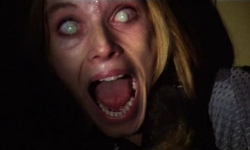 Melding two beloved fright-film subgenres — the zombie movie and the haunted-house thriller — Fulci’s The Beyond goes way beyond the horror norm, testing audience’s tummies with an triple-eye-gouging, face-melting, head-impaling, throat-tearing, forehead-penetrating, cheek-puncturing good ol’ time. The practical effects are grossly realistic, except for one point where some fakery is obvious. However, that’s the part where several tarantulas slowly crawl onto a paralyzed guy’s face and tear it apart, claiming the honor of being cinema’s all-time sickest spider scene. Arachnophobes will flip.
Melding two beloved fright-film subgenres — the zombie movie and the haunted-house thriller — Fulci’s The Beyond goes way beyond the horror norm, testing audience’s tummies with an triple-eye-gouging, face-melting, head-impaling, throat-tearing, forehead-penetrating, cheek-puncturing good ol’ time. The practical effects are grossly realistic, except for one point where some fakery is obvious. However, that’s the part where several tarantulas slowly crawl onto a paralyzed guy’s face and tear it apart, claiming the honor of being cinema’s all-time sickest spider scene. Arachnophobes will flip.
If you can stomach it, see it! Apropos of nothing, one of the walking dead at the 1:20 mark looks like a young Robert De Niro. —Rod Lott

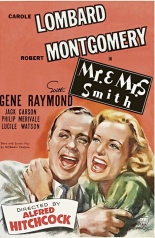

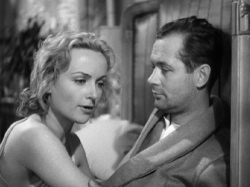 He didn’t. Mr. and Mrs. Smith is a standard screwball comedy with the requisite farce being that the title characters learn they were never legally married. When Ann Smith (Lombard) decides that that’s all for the best and that she doesn’t want to get remarried, David (Robert Montgomery) has to woo her all over again. The problem is in courting someone who already knows all his faults.
He didn’t. Mr. and Mrs. Smith is a standard screwball comedy with the requisite farce being that the title characters learn they were never legally married. When Ann Smith (Lombard) decides that that’s all for the best and that she doesn’t want to get remarried, David (Robert Montgomery) has to woo her all over again. The problem is in courting someone who already knows all his faults.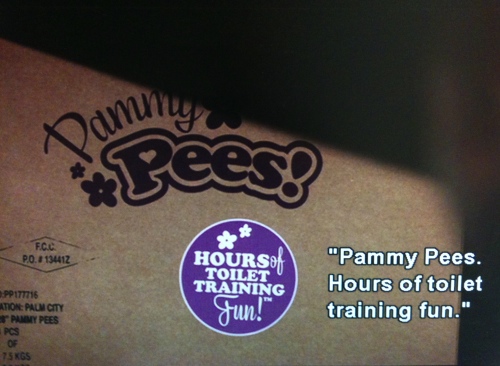
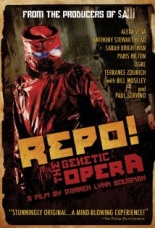
 If the thought of watching a low-budget slasher/Goth musical co-starring Paris Hilton makes your blood run cold, you’d do best to stop reading now, because you won’t find a truer example of this incredibly rare sub-genre than
If the thought of watching a low-budget slasher/Goth musical co-starring Paris Hilton makes your blood run cold, you’d do best to stop reading now, because you won’t find a truer example of this incredibly rare sub-genre than  Also along for the ride is a still-fetching Sarah Brightman as Blind Mag, Geneco’s spokeswoman, whose upcoming retirement comes at a significant price. The film’s title references Head’s day job, which requires him to repossess the organs of unlucky Geneco customers unable to make their payments.
Also along for the ride is a still-fetching Sarah Brightman as Blind Mag, Geneco’s spokeswoman, whose upcoming retirement comes at a significant price. The film’s title references Head’s day job, which requires him to repossess the organs of unlucky Geneco customers unable to make their payments.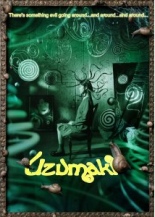
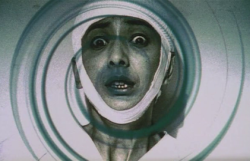 You’re better off with the
You’re better off with the